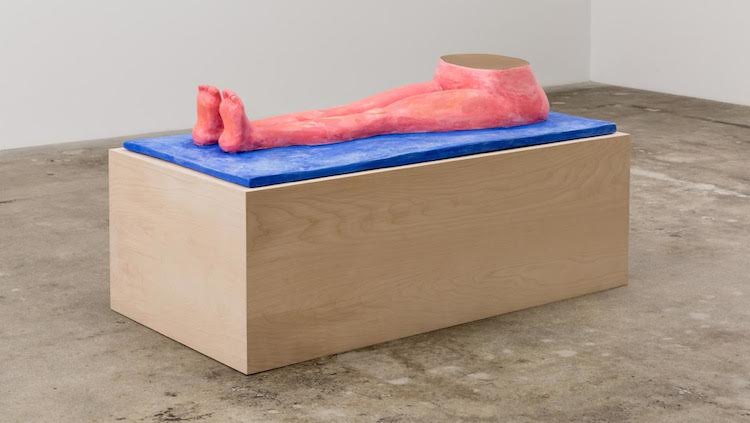“Sleeping less than seven hours per night on a regular basis is associated with adverse health outcomes, including weight gain and obesity, diabetes . . .” I saw this text printed on the screen of another writer’s computer at this café where I was sitting, looking at his screen instead of my own while thinking about John Finneran’s show at Hannah Hoffman Gallery, which is called Dreamers at the Gates of Where Dreamers Are. I wondered if, based on his artwork, John Finneran was the soundest of sleepers. I made this judgment to myself, silently, basing it entirely on the dream-like state of his artwork. At this spacious gallery, the artist’s paintings and one brass-and-plaster sculpture offer something of a Picasso-meets-Brancusi, harkening back to a retro Modernist style of painting, which is a nice break from the often times hyper-conceptual or mostly theory-driven yet visually dull artwork that is so common these days, which it would be great to just attribute to artists not getting enough sleep at night.
To sleep is to dream. This summer I saw a show called Psyche, Symbol, and Trauma: The Art of Lilli Gettinger (1920-1999) at the Center for Modern Psychoanalytic Studies in New York City. The lucid paintings were often times described as “psychological self portraits,” a nod to the idea that the selfie or self-portrait could be about one’s psyche and state-of-being rather than an image that needs to include the face or the body at all. Gettinger escaped the Holocaust, leaving Germany in 1938 and making it to U.S. soil by 1941. She created not paintings but something she invented — sculptural medium, a combination of paper mâché and resin — which in turn offered a three-dimensionality to scenes that were often times harrowing: families and animals gathered together on the deck of a ship as in Ship of Fools (1969), and other renderings of dream states, a journey into the unconscious.
Read more at http://www.craveonline.com/art/913785-exhibit-dream-little-art-dream-john-finneran#AFWChuQ2IQbkjEGP.99




